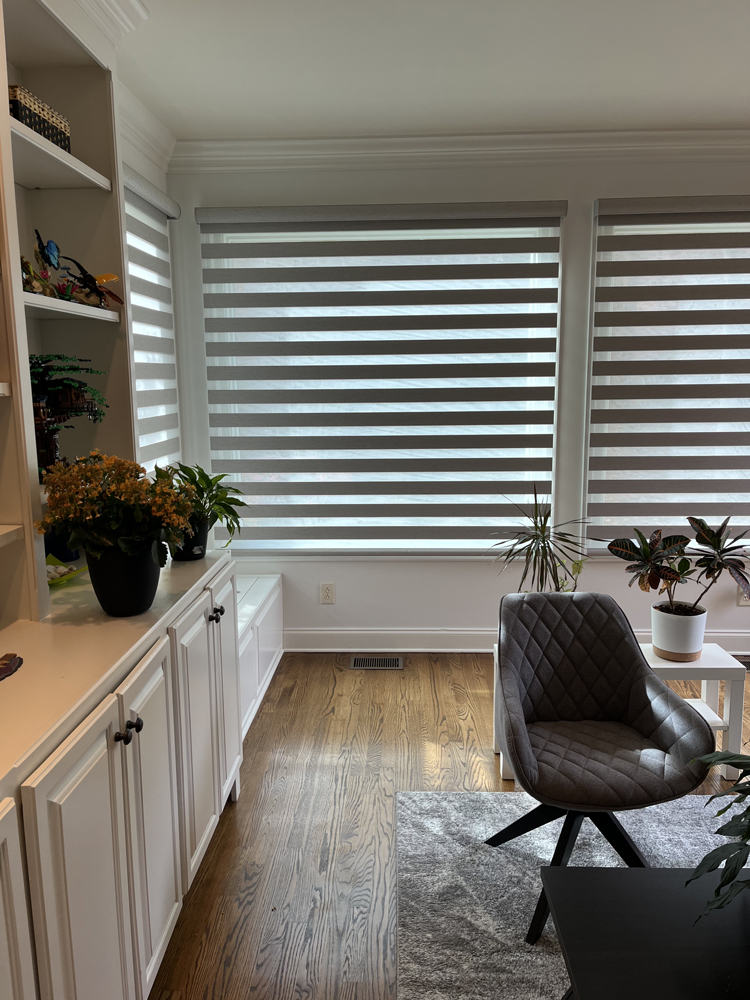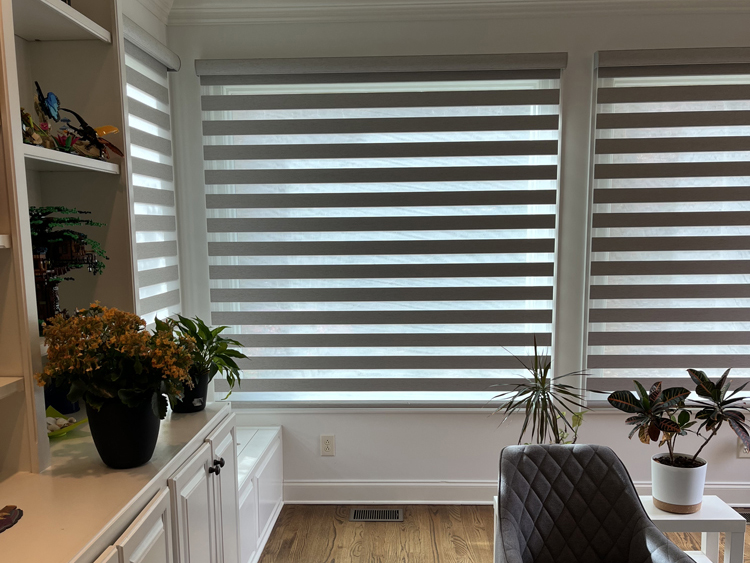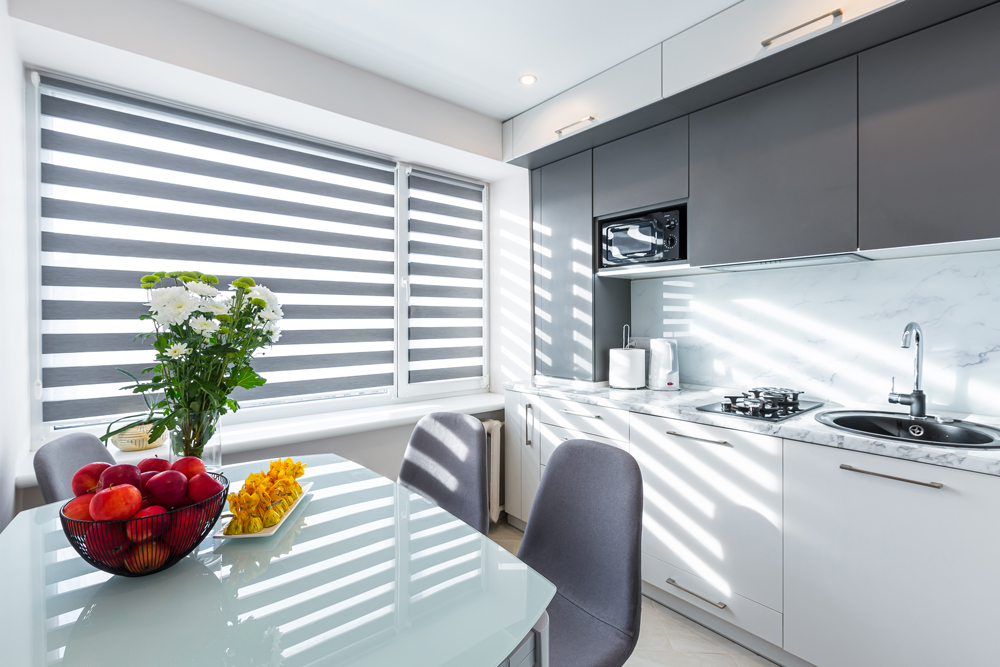Are you tired of battling with ill-fitting blinds that leave your windows exposed? Look no further! Welcome to “The Ultimate Guide to Measuring Windows for Blinds: Step-by-Step Instructions for Perfect Fit.” In this comprehensive guide, we will take you through the process of measuring your windows accurately, ensuring that you get the perfect fit for your blinds every time.
Whether you’re a first-time blinds buyer or a seasoned pro, having the correct measurements is crucial for a seamless installation. We understand the frustration of having blinds that are either too big or too small, which is why we’ve created this step-by-step guide to help you measure your windows like a pro.
From gathering the necessary tools to measuring different types of windows, we will cover everything you need to know to ensure a successful installation. We’ll also provide helpful tips and tricks along the way to make the process as smooth and hassle-free as possible.
By following our expert advice, you’ll be able to confidently measure your windows, allowing you to choose the perfect blinds that not only enhance your home’s aesthetics but also provide maximum privacy and light control. Let’s dive in and get those windows perfectly measured!
Importance of Measuring Windows Accurately for Blinds
Accurate measurements are crucial when it comes to selecting blinds that fit your windows perfectly. Ill-fitting blinds can lead to a variety of issues, including inadequate light control, compromised privacy, and an unappealing aesthetic. When blinds are too large, they can obstruct the view and may require excessive trimming, which can weaken the product. On the other hand, blinds that are too small can leave gaps, allowing unwanted light and prying eyes to invade your space. Therefore, taking precise measurements ensures that your blinds will function as intended and enhance the overall appearance of your home.
Additionally, measuring your windows correctly can save you both time and money. When you order the wrong size, the hassle of returning products and waiting for replacements can be frustrating and time-consuming. Additionally, custom blinds can be costly, and incorrect measurements may lead to unnecessary expenses. By ensuring that you measure accurately from the start, you eliminate the risk of errors that could lead to wasted resources. This is particularly important when investing in high-quality window treatments, as you want your purchase to be worthwhile.
Lastly, understanding the importance of accurate measurements can empower you as a homeowner or decorator. Knowing how to measure correctly allows you to take control of your home improvement projects, ensuring that everything fits seamlessly. This confidence can extend beyond just blinds, assisting you in future projects involving curtains, shades, or other window treatments. By adopting a careful approach to measuring your windows, you set a solid foundation for creating a beautifully finished space that reflects your style and taste.
Tools Needed for Measuring Windows
Before you embark on the journey of measuring your windows for blinds, it’s essential to gather the right tools. Having the necessary equipment on hand will make the process smoother and more efficient. The first tool you’ll need is a reliable measuring tape. A metal measuring tape is ideal as it can easily bend around corners and provide accurate measurements even in tight spaces. Ensure that your measuring tape is long enough to cover the height and width of your windows without any issues.
Next, you may want to have a pencil and a notebook ready to jot down your measurements. Keeping track of your numbers is vital, as it helps prevent confusion later on. Alternatively, some individuals prefer using a smartphone or tablet to record their measurements digitally. Whichever method you choose, make sure that your recording system is organized so that you can reference it easily when placing your order for blinds.
Lastly, a level can be a helpful addition to your toolkit, especially if you are measuring for inside mount blinds. A level helps ensure that your measurements are straight and even, which is crucial for achieving that polished look when your blinds are installed. If you have a square or rectangular window, a square tool can also assist in confirming the angles of your window frame. By having the right tools at your disposal, you set yourself up for success in achieving the perfect fit for your blinds.
Measuring for Inside Mount Blinds
When it comes to inside mount blinds, the measurements you take are critical for ensuring a snug fit within the window frame. Inside mounts are installed within the window opening, which provides a clean and streamlined look. However, this installation method requires precise measurements to avoid gaps or misalignments. To begin, you’ll want to measure the width and height of the window frame. It’s essential to measure in three different locations: the top, middle, and bottom for width, and the left, center, and right for height. This way, you can account for any variations in the frame that may affect the final size.
When measuring for width, always take the smallest measurement of the three. This ensures that your blinds will fit comfortably within the frame without becoming stuck or unable to operate correctly. For height, again, take the smallest measurement from your three points. It’s also worth noting that if your window has any obstructions, such as window handles or trim, you’ll want to account for these as well, as they can affect the installation and operation of your blinds.
Additionally, be mindful of the depth of your window frame, especially if you’re considering a thicker blind style. The depth will determine whether your chosen blinds will fit inside the recess of the window without protruding. Knowing the depth can also help you decide on the type of mounting brackets you will need. By taking into account all these factors, you can confidently measure your windows for inside mount blinds, ensuring a perfect fit that enhances the beauty of your space.
Step-by-Step Instructions for Measuring Windows for Inside Mount Blinds
To measure your windows for inside mount blinds, follow these step-by-step instructions to ensure accuracy and precision. Start by gathering your tools, including a measuring tape, pencil, and notebook. Begin at the top of the window frame and measure the width from the left edge to the right edge. As previously mentioned, measure at three points: the top, middle, and bottom. Record the smallest of these measurements, as this will be the width you provide when ordering your blinds.
Next, measure the height of the window. Again, you will want to take measurements at three points: the left side, center, and right side. Record the smallest height measurement to ensure that your blinds will fit properly within the frame. It’s also a good idea to measure the depth of the window frame. Use your measuring tape to determine how far back the window frame extends. This is important for ensuring that the blinds you choose will fit within the recess without sticking out or causing any operational issues.
Once you have your measurements recorded, double-check them to ensure they are accurate. It’s always a good practice to measure twice and cut once—this principle applies to measuring for blinds as well. If you have any special considerations, such as window handles or any decorative trim, make sure to note these down. By following these steps, you’ll have the precise measurements needed to order your inside mount blinds confidently.
Measuring for Outside Mount Blinds
Outside mount blinds are a popular choice for homeowners looking to enhance their windows’ appearance and improve light control. Unlike inside mount blinds that fit within the window frame, outside mount blinds are installed on the wall or the window casing, extending beyond the window edges. This installation style can create the illusion of larger windows and allows for greater light coverage. To measure correctly for outside mount blinds, you’ll need to focus on width and height while considering the desired overlap and aesthetics.
Begin by measuring the width of the window. For outside mount blinds, it’s recommended to add additional width to your measurements to ensure adequate coverage. A general rule of thumb is to add at least 1-3 inches on either side of the window frame. This extra width helps block out more light and provides a more finished look when the blinds are closed. Measure from the farthest left edge to the farthest right edge of your intended mounting area and record this measurement.
Next, measure the height for your outside mount blinds. Start at the top of where you want the blinds to hang down to the bottom of the window or slightly below the sill, depending on your preference. If you want to create a more dramatic effect, consider extending the height beyond the window frame. It’s essential to factor in any decorative elements you may want to incorporate, such as valances or cornices. Once you have your height measurement, double-check it to ensure accuracy.
Finally, consider the depth required for the mounting brackets. Outside mount blinds typically need a little more depth than inside mount options, so ensure that your walls or casing can accommodate this. By carefully measuring for outside mount blinds, you can achieve a beautiful and functional window treatment that enhances the overall look of your room.
Step-by-Step Instructions for Measuring Windows for Outside Mount Blinds
Measuring for outside mount blinds requires a slightly different approach than measuring for inside mounts. To begin, gather your measuring tools, including a measuring tape, pencil, and notepad. Start by determining where you want to install the blinds. Identify the width of the area where the blinds will be mounted. Measure from the far left edge to the far right edge, ensuring to include any desired overlap. Remember, adding at least 1-3 inches on either side will help provide better light control and coverage.
Once you have your width measured, it’s time to measure the height. Decide how high you want the blinds to be mounted. It’s common to mount the blinds slightly above the window frame to create an illusion of height. Measure from the top of the mounting area down to your desired endpoint, whether that’s the bottom of the window or slightly below. Record this measurement carefully, as it will be crucial for ordering your blinds.
As a final step, consider any additional elements you might incorporate, such as decorative valances or cornices. If you plan to use these, ensure to measure their height and width as well, as they will affect the final appearance of your window treatments. Once all measurements are taken, it’s wise to review them for accuracy. Measuring for outside mount blinds can be straightforward, and by following these steps, you’ll be well on your way to achieving a lovely window treatment.
Common Mistakes to Avoid When Measuring Windows for Blinds
Measuring windows for blinds can seem straightforward, but there are several common mistakes that can lead to improper sizing. One of the biggest errors is failing to account for any obstructions, such as window handles, trim, or moldings. These elements can affect how the blinds operate and fit, so it’s essential to measure around them and include any necessary adjustments in your final measurements. Always look closely at your window and its surroundings before finalizing your measurements to avoid these pitfalls.
Another frequent mistake is only taking one measurement for width and height. Windows can often have slight variations due to settling or construction irregularities, which means relying solely on a single measurement can lead to errors. Instead, always measure in multiple locations and take the smallest measurement to ensure that your blinds will fit properly. This practice applies to both inside and outside mount blinds to guarantee a snug and functional fit.
Lastly, some individuals forget to double-check their measurements before placing their orders. It’s crucial to have a second look at your recorded numbers to confirm accuracy. Even minor mistakes can lead to significant issues when it comes time to install your blinds. Take the time to review and validate your measurements to ensure that you achieve the perfect fit. By being aware of these common mistakes and taking steps to avoid them, you’ll be on your way to enjoying beautifully fitted blinds in your home.

Tips for Ensuring a Perfect Fit with Your Blinds
To achieve the perfect fit for your blinds, there are several tips you can keep in mind throughout the measuring and ordering process. First and foremost, always use a quality measuring tape and take your time while measuring. Rushing can lead to errors, so it’s best to approach the task with patience and precision. Make sure that the measuring tape is straight and taut when taking measurements, as any slack can lead to inaccuracies.
Another helpful tip is to consider the style and function of the blinds you desire. Different types of blinds may require different measurement considerations. For example, if you’re opting for a thicker style, such as plantation shutters, you may need to account for depth in your measurements. Always check the specifications provided by the manufacturer for any additional guidelines on measuring for specific blind types.
Additionally, if you are particularly unsure about your measurements or the fitting process, don’t hesitate to seek professional assistance. Many home improvement stores offer measuring services, or you might consider hiring a local window treatment expert. Investing in professional help can save you time and ensure that you achieve the desired look and functionality of your blinds. By employing these tips, you can enhance your chances of success in obtaining perfectly fitted blinds for your windows.
Ordering Custom Blinds Based on Your Measurements
Once you have accurately measured your windows and ensured that all your numbers are correct, it’s time to place your order for custom blinds. Many companies offer the option to order blinds that are made to your specifications, allowing you to get the perfect fit for your windows. When ordering, you will need to provide the measurements you recorded, along with any specific details regarding the style, color, and material of the blinds you desire.
Before submitting your order, double-check the manufacturer’s guidelines to ensure that you have followed their instructions for measurements. Some companies may have unique requirements for the way measurements are taken or may provide specific instructions for different types of blinds. Adhering to these guidelines will help you avoid potential issues with your order and ensure a smoother installation process.
After placing your order, be sure to keep track of the expected delivery time and any installation instructions provided. Custom blinds may take longer to arrive than off-the-shelf options, so plan accordingly. Once your blinds arrive, inspect them immediately for any defects or discrepancies with your measurements. If everything looks good, you can proceed with installation, knowing that you have taken the necessary steps to achieve a perfect fit.

Conclusion: Enjoying Perfectly Fitted Blinds for Your Windows
In conclusion, measuring your windows accurately for blinds is an essential step in achieving the perfect fit and enhancing the overall aesthetic of your home. By understanding the importance of precise measurements and gathering the right tools, you can confidently tackle the measuring process. Whether you choose inside or outside mount blinds, following step-by-step instructions and avoiding common pitfalls will help ensure that your installation goes smoothly.
With the tips and guidance provided in this ultimate guide, you are now equipped with the knowledge needed to measure your windows like a pro. Remember to take your time, double-check your measurements, and consider the specific requirements of the blinds you desire. If you ever feel uncertain, don’t hesitate to seek professional help to guarantee the best results.
Ultimately, enjoying perfectly fitted blinds will transform your living space. You’ll benefit from improved privacy, light control, and a polished appearance that enhances your home’s overall design. With your new blinds in place, you can sit back, relax, and revel in the satisfaction of knowing you’ve achieved a flawless window treatment that elevates your home’s comfort and style.
Want to take the guess work out of Measuring Windows for Blinds? Trust an Expert!
Even with the tips we’ve listed above, there is no way to guarantee a perfect fit for your windows, especially if you are inexperienced. Every home is unique, and there could be something as simple as a piece of trim that throws off your measurement. Trusting an expert, like the ones found at Express Blinds, can make the process much easier. Our experts have years of experience and know exactly how to get the best fit when measuring windows for blinds or any other window treatment. Give us a call today to schedule a consultation.




